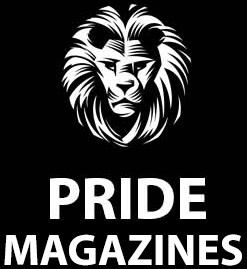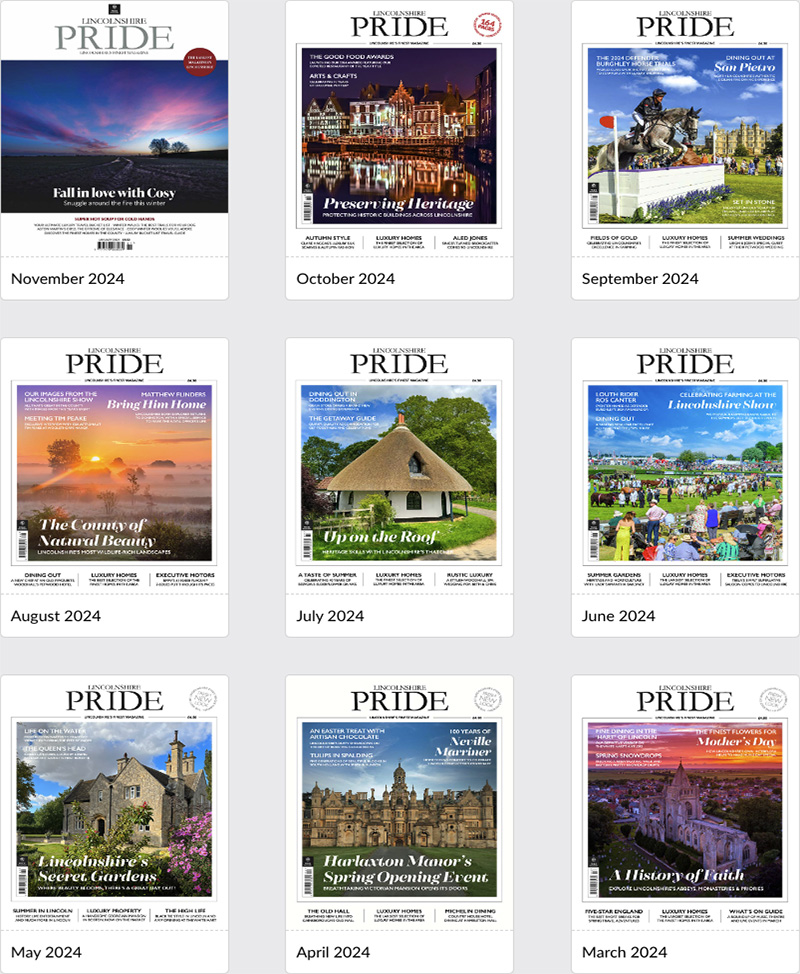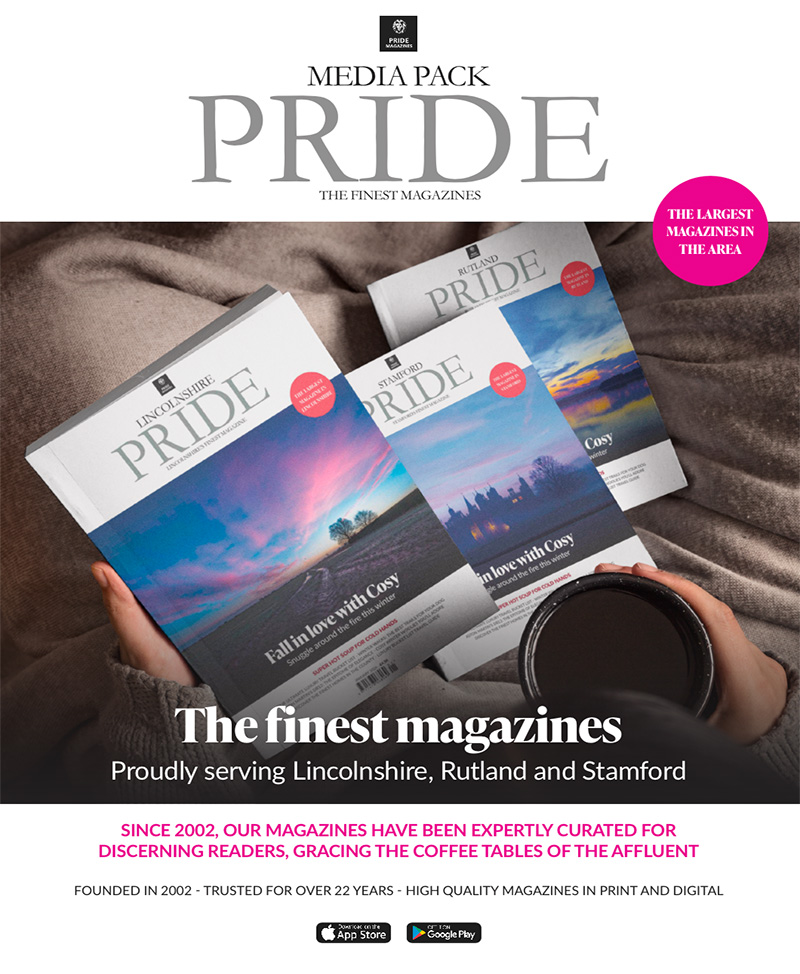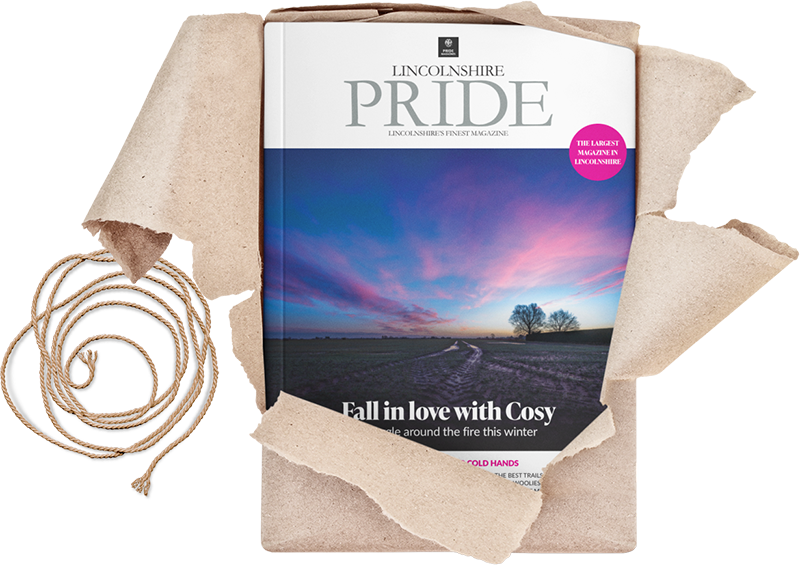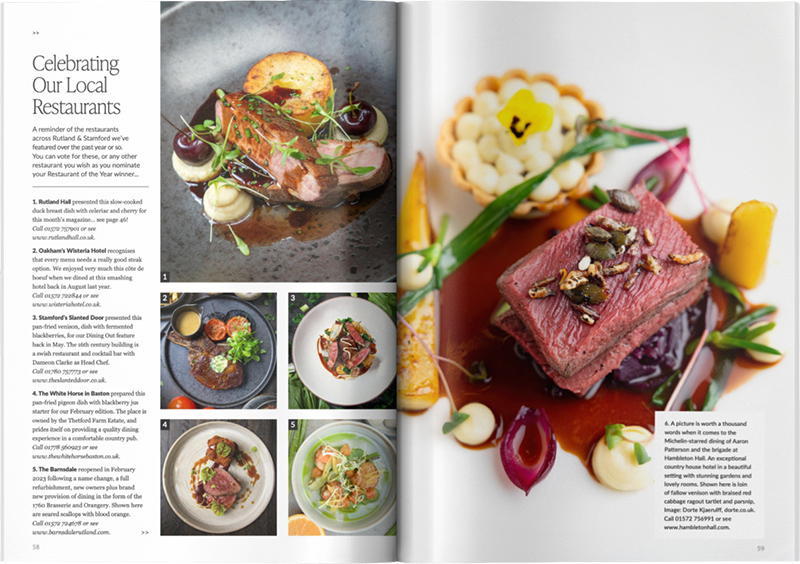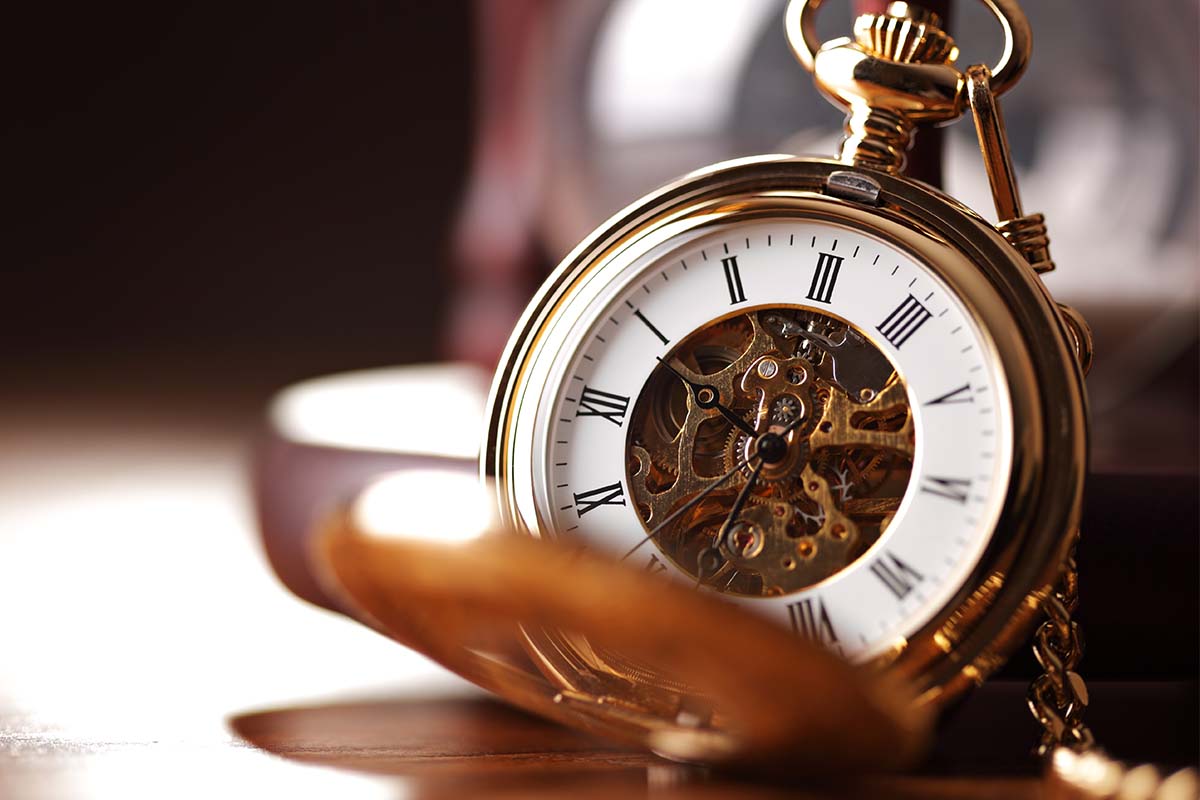
Lincolnshire & Newark Museums: The Museum of Timekeeping
Based near Newark, the Museum of Timekeeping is an impressive exploration of the history of how people have tried to faithfully answer the question ‘what time is it?’ As the countdown begins and 2024 ticks over to 2025, we this month present a brief history of time
5, 4, 3, 2, 1… Happy New Year! Glasses of Champagne clink, old calendars and diaries are discarded, and resolutions are made. Oddly enough though, for a ritual observed all over the world, it’s… well, it’s artificial.
OK, perhaps artificial is overstating matters; let’s say arbitrary, for only by universal consensus does the concept of time exist at all. It’s midnight not as some natural condition, but only because we all agree when midnight occurs, and do that with consistency, just as gold or currency has no innate value other than what we ascribe it. And yet, how on earth would we function without it?
“It can be a matter of anything from physics to philosophy,” says Dr Robert Finnigan. Robert has an interest in literature and heritage, but since 2020 he has been managing the Museum of Timekeeping at Upton near Newark.
“I was born in Ireland and my family moved to County Durham where we lived until about 2018 when I studied at Nottingham Trent University.”
Rob has several degrees in literature including a masters degree plus a doctorate in Anglo-Irish literature, but during the pandemic when boredom set in, he decided to pursue another masters degree, this time in International Heritage Management, which necessitated working in the heritage sector.
Rob reached out to the Museum of Timekeeping and began working there, looking after the museum’s 10,000 exhibits and at the same time grappling with the nebulous concept of how time might be defined.
“It’s not where my academic credentials led me, but it’s interesting to see how time has become an interest… specifically how it’s described and how it impacts every aspect of our lives. I’ve little experience of the technicalities of horology – clock repairing for example – but I’m fascinated by the social context of time, the fact that people have been measuring it for so many centuries and their reasons for doing so.”
Take a modern invention such as the internet and there are derivative technologies that contributed to its creation. You might take the moment Tim Berners-Lee created HTML markup language, the URL and HTTP system as being the moment that the internet was ‘created.’
But computers were communicating with one another, via phone lines, long before that. Likewise, there’s no definite technology or an exact moment that you can use to say when time was ‘invented.’
“The need and the desire to measure time has to be contextualised, for instance, with how an agrarian or industrial society functions,” says Rob. “When should a farmer get up, when should they plant crops, when should the harvest them… putting a meaningful definition on ‘when’ something should happen necessitates a way to reliably describe time.”
The same applied when society became industrialised: when should people start work, when should they finish work? Time became something that impacts all of our lives, and soon it was necessary to establish how long it takes to travel somewhere or how our lives would be organised.
The earliest way of measuring time was observing the sun rise and set, and observing the changing seasons. That eventually gave rise to sundials, for example. Some time later, efforts were made to measure the passage of time, using what we call glasses, more commonly known as sand glasses or hourglasses, or with water clocks and fire clocks.
Periodisation is really contentious, and there are many that would dispute a date or even a century, but from the Renaissance it became necessary and possible to measure time for explorers to determine how far they had travelled. In the Middle East, it was essential for the adherence of salah in the Islamic faith which calls its followers to prayer five times a day.
But in the early to mid-14th century you get the invention of mechanical timepieces, not necessarily watches, but early forms of clocks. Western cultures were more advanced in their attempts to measure time as there was a culture of traversing oceans, which necessitated being able to track time and distance as new territories in the world were discovered.
Also in the 14th century the fall of Constantinople and the Byzantine Empire occurred and émigrés flooded the rest of the world with astronomers, scientists and theologians, spreading knowledge around Europe.
A marvel of the Renaissance was the Astrarium of Giovanni Dondi dall’Orologio, created around 1350 and considered a marvel of its day with seven faces and 107 moving parts, showing the positions of the sun, the moon, and the five planets then known to be a part of the Solar System.
Back in Britain, church clocks were beginning to be incorporated onto parish churches, one of the oldest examples being the clock on Salisbury Cathedral, which dates to about 1368. This was a useful means of calling people to church at the correct time, and it led to a further proliferation of mechanical timekeeping in into the Tudor and Stewart eras, into the time we now consider the early modern period when mercantile endeavours were beginning and people were travelling to India, China and what we now know as America.
Christiaan Huygens in 1656 was inspired by Galileo Galilei’s investigation of pendulums, and patented his pendulum clock, describing it in his Horologium manuscript of 1658. The technology gave rise to long-case clocks and soon wealthier people wanted to take ownership of time, almost wanting to possess it and keep it in their pocket. This gave rise to the early development of pocket watches and for the very wealthiest of properties, clocks on the face or roof of their properties which, as well as having social status might also be used to ensure their workers put in a full day of work.
The Royal Observatory was founded in 1675 by King Charles II, and established longitude and latitude, which was subsequently applied to Royal Navy marine chronometers. It established the Greenwich Prime Meridian and by extension, GMT in 1884.
Prominent in the late 19th century was Ruth Belville, The Greenwich Time Lady, who would literally sell time, continuing the work of her father John Henry Belville who created a service for 200 clients, setting his clock to Greenwich Mean Time and synchronising his clients’ clocks when they subscribed to his service. Ruth took over the business and ran it until the Standard Time Company usurped her business model in 1876 by providing time signals directly from the Royal Observatory.
Other entrepreneurs seeking to capitalise on time were the knocker uppers, who would rap on the window with a pole or shoot small stones with a pea shooter to wake up those which subscribed to her service, ensuring they would wake up in time for their shifts in mills and factories. As part of the Industrial Revolution, the railways too, necessitated standardised time for their timetables, and so mass transport also helped to proliferate accurate time.
Whilst there were other bodies – such as the Worshipful Company of Clockmakers – who were concerned with the standardisation of time and the creation of good timepieces, the British Horological Institute was founded in 1858 and aggregated these with a goal of educating the public about horology, and how to make watches and clocks, including how to repair them and how to train new horologists.
Today the BHI is headquartered at Upton Hall, in the same building as the Museum of Timekeeping, even though the two are completely separate entities. Amid the Second World War, the Clerkenwell building in which the BHI was based was bombed quite badly, and the Institute was facing ever more serious repairs over the next few decades. In 1972 the BHI moved to Upton Hall, a Grade II* listed building with over 70 rooms, constructed in the Greek Revivalist style of architecture and dating back to 1828.
Its new location ensured the BHI was better placed to ensure access for members all over Britain, and it was a permanent home for the museum’s 10,000 exhibits, of which around 5,000 are on display at any one time, held in a trust since 1994.
Among the exhibits are a replica of an early monastery clock created by John Harris, and a pocket watch worn by Captain Scott during his Antarctic expedition. There are numerous chronometers from the age of naval exploration, and military timepieces too.
Some of the exhibition space upstairs is dedicated to the development of wall clocks or timers, whilst downstairs another room houses all four iterations of Britain’s speaking clocks, the most recent of which was still receiving 30m calls into the 21st century.
“The museum has a vast library and huge archives,” says Rob. “Prior to becoming Museum Manager I was the archivist and librarian. We also have a conservation and maintenance group who come in once a month and undertake specialist work. Almost all of our exhibits are kept in working order.”
As you can imagine, being in the museum when the big hand reaches 12, you’re treated to a chorus of chimes and dings and bongs, the consistency and synchronicity of which is a testimony to the hard work the museum invests in keeping everything ticking over.
As for the newest exhibit? You’d be forgiven for guessing an atomic clock. In fact, an Apple Watch is one of the most up to date items in the museum’s collection. It has become the top-selling watch globally, surpassing even venerable brands like Rolex, with over 38m sold since 2015. Take a look at the functionality of that particular device and it’s undoubtedly impressive, and if anything shows how far we’ve come in our pursuit of accurate timekeeping.
Ironically it’s the device that has re-popularised the wristwatch, and yet its ability to tell the time is now probably the least revered among its functions. But the measurement of time itself is societally more important than ever, its latest gift being the functioning of GPS and satellite navigation. For a concept that dates back to pre-industrial society, it has had a decidedly enduring effect on the way we live our lives.
Perhaps, then, you’ll make the time to visit Upton’s Museum of Timekeeping when it reopens in spring and enjoy exploring the subject in more detail.
For more on the Museum of Timekeeping, read our full feature in the January edition of Lincolnshire Pride at https://www.pridemagazines.co.uk/lincolnshire/view-magazines?magazine=January-2025
